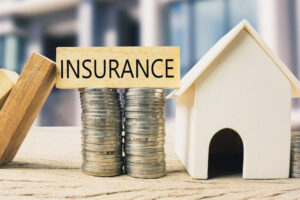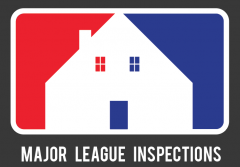 Home insurance inspections are a critical part of the insurance process, helping to ensure that properties are adequately assessed for risk and coverage. These inspections, which can be requested by insurance companies for various reasons, provide a detailed evaluation of a home’s condition, identifying potential hazards that could affect the homeowner’s insurance policy. This article will explore what is checked by a home inspector during an insurance inspection, breaking it down into comprehensive sections for clarity.
Home insurance inspections are a critical part of the insurance process, helping to ensure that properties are adequately assessed for risk and coverage. These inspections, which can be requested by insurance companies for various reasons, provide a detailed evaluation of a home’s condition, identifying potential hazards that could affect the homeowner’s insurance policy. This article will explore what is checked by a home inspector during an insurance inspection, breaking it down into comprehensive sections for clarity.
What is a Home Insurance Inspection?
A home insurance inspection is a thorough evaluation conducted by a certified inspector to assess the condition of a property. The primary goal is to verify the details provided in the homeowner’s insurance application and to identify any risks that could affect the insurability of the home. Unlike standard home inspections, which are typically conducted during real estate transactions, insurance inspections focus on the property’s risk factors and the adequacy of the coverage.
Purpose of the Inspection
The inspection serves several key purposes:
-
- Risk Assessment: To evaluate potential risks that could lead to insurance claims.
- Coverage Verification: To confirm that the dwelling coverage accurately reflects the home’s replacement cost.
- Safety Evaluation: To identify safety hazards that could pose liability risks to the homeowner.
Timing of Inspections
Insurance inspections can occur at various times, such as:
-
- Policy Initiation: When a new policy is being created.
- Policy Renewal: Often required during the renewal process to ensure the home remains insurable.
- Post-Renovation: After significant renovations or improvements to the property.
Key Areas Inspected
During a home insurance inspection, several critical areas are evaluated to determine the overall condition and safety of the property. Inspectors typically focus on both the interior and exterior aspects of the home to get a comprehensive view.
Exterior Inspection
The exterior of the home is the first area of focus. Inspectors will assess various components, including:
-
- Roof Condition: Inspectors look for missing or damaged shingles, signs of leaks, and the overall age of the roof. A well-maintained roof is crucial for preventing water damage and maintaining the home’s structural integrity.
- Foundation and Structure: Any visible cracks or signs of settling in the foundation can indicate serious structural issues. Inspectors will also check for signs of wood rot or termite damage in the exterior materials.
- Landscaping: Inspectors will evaluate the landscaping for potential hazards, such as overhanging branches or large trees that could pose a risk to the home during storms.
Interior Inspection
The interior inspection is equally important and involves a detailed examination of various systems and components within the home:
-
- Electrical Systems: Inspectors will check the condition of wiring, circuit breakers, and electrical panels. Outdated or faulty wiring can be a fire hazard and may lead to increased premiums or denial of coverage.
- Plumbing: The plumbing system is inspected for leaks, outdated materials, and overall functionality. Inspectors will look for signs of water damage, such as stains on ceilings or walls.
- Heating and Cooling Systems: Inspectors evaluate the HVAC system’s age, maintenance history, and functionality. An inefficient system may lead to higher energy costs and could affect insurance rates.
Specific Components Checked by Inspectors
Home insurance inspectors delve into various specific components of the home to identify potential risks. Here are some of the critical areas they will examine:
Safety Features
-
- Smoke Detectors and Carbon Monoxide Alarms: Inspectors will verify that these safety devices are present and functional. Properly functioning alarms can significantly reduce the risk of fire-related claims.
- Fire Extinguishers: The presence and accessibility of fire extinguishers are checked, as they are essential for fire safety.
Structural Integrity
-
- Walls and Ceilings: Inspectors will look for signs of damage, including cracks, water stains, and mold growth, which could indicate underlying issues.
- Floors: The condition of flooring materials is assessed for hazards, such as loose tiles or uneven surfaces that could lead to trips and falls.
Appliances and Fixtures
-
- Major Appliances: Inspectors will evaluate the condition of appliances like ovens, refrigerators, and water heaters. They will check for any safety recalls or issues that could pose risks.
- Windows and Doors: The functionality of windows and doors is assessed, including the condition of seals and locks, to ensure they provide adequate security.
The 4-Point Inspection
In some cases, especially for older homes, insurers may require a 4-point inspection. This focused evaluation assesses four critical systems:
1. Roof
Inspectors assess the roof’s overall condition, age, and any signs of damage. Homes with roofs older than a certain age may face difficulties obtaining insurance coverage.
2. Electrical System
The electrical system is examined for outdated wiring, circuit breakers, and compliance with current safety codes. Homes with older electrical systems may be deemed too risky to insure.
3. Plumbing System
Inspectors will check the plumbing for leaks, the condition of pipes, and the functionality of fixtures. Certain materials, like polybutylene pipes, may be flagged as high-risk.
4. HVAC System
The heating and cooling systems are evaluated for age and efficiency. An older or poorly maintained HVAC system can lead to higher insurance premiums.
Wind Mitigation Inspections
In hurricane-prone areas, insurers may require a wind mitigation inspection to assess the home’s ability to withstand strong winds. This inspection can lead to reduced premiums if the home is found to be well-prepared for wind-related damage.
Key Focus Areas
During a wind mitigation inspection, the following aspects are evaluated:
-
- Roof Design: The type of roofing materials and design can significantly affect a home’s resilience to wind.
- Window Protection: Inspectors check for storm shutters or impact-resistant windows that can reduce damage during storms.
- Building Ties and Anchors: The strength of the connections between the roof and walls is assessed to ensure the home can withstand high winds.
What Happens After the Inspection?
Once the inspection is complete, the inspector compiles a report detailing their findings. This report is submitted to the insurance company, which will use it to make decisions regarding coverage.
Possible Outcomes
-
- Coverage Approval: If the home meets the insurer’s standards, coverage will be approved, and the policy will be issued.
- Required Repairs: If issues are identified, the insurer may require the homeowner to address these problems within a specified timeframe to maintain coverage.
- Policy Denial: In severe cases, if the home is deemed too risky, the insurer may deny coverage altogether.
Preparing for a Home Insurance Inspection
Preparation is crucial for a successful home insurance inspection. Homeowners can take several proactive steps to ensure their property is ready for evaluation.
Conduct a Self-Assessment
Before the inspection, homeowners should conduct their own assessment of the property:
-
- Inspect the Roof: Look for missing shingles, leaks, or other signs of wear.
- Check for Water Damage: Examine walls and ceilings for stains or mold growth.
- Evaluate Safety Features: Test smoke detectors and carbon monoxide alarms to ensure they are functional.
Make Necessary Repairs
Addressing minor issues before the inspection can prevent larger problems down the line:
-
- Fix Leaks: Repair any leaks in plumbing fixtures or roofs to avoid water damage.
- Secure Loose Items: Ensure that gutters, downspouts, and other exterior features are secure and free of debris.
Consequences of Failing an Inspection
Failing a home insurance inspection can have serious repercussions for homeowners. Depending on the severity of the issues identified, the following outcomes may occur:
Increased Premiums
If the inspection reveals significant risks, insurers may increase premiums to offset the potential for claims.
Policy Cancellation
In extreme cases, if a home is deemed uninsurable, the insurance company may cancel the policy, leaving the homeowner to seek coverage elsewhere.
Time to Remedy Issues
If fixable problems are identified, insurers often provide a grace period for homeowners to make necessary repairs. Proof of repairs will usually be required before coverage is reinstated.
FAQs About Home Insurance Inspections
Do I Need to Be Present for the Inspection?
For exterior inspections, homeowners typically do not need to be present. However, for interior inspections, it is usually required for the homeowner to be available.
How Long Does an Inspection Take?
Most home insurance inspections take about one to two hours, depending on the size and condition of the property.
Can I Get Insurance Without an Inspection?
While it is possible to obtain insurance without an inspection, many insurers will require one, especially for older homes or properties with a history of claims.
We Provide Home Inspections for Homeowners Insurance Purposes
Insurance inspections are routine assessments conducted by insurance companies to evaluate the condition, safety, and risk factors associated with a property. These inspections are typically carried out for homeowners, commercial properties, and vehicles to determine the level of risk the insurance company may be undertaking.
> Learn More
Contact Us (954-909-1255) For a Free Consultation!
—
 About Major League Inspections
About Major League Inspections
Our home inspections involve thorough evaluations of residential properties to identify any issues, ensuring that buyers and sellers are well-informed about the property’s condition. Our commercial inspections focus on assessing the structural integrity, safety features, and compliance of commercial properties with building codes and regulations. Both types of inspections are crucial for promoting safety and informed decision-making. Our environmental inspection services address damage caused by water, fire, mold, and other disasters. When you experience environmental damage, it’s crucial to conduct a thorough inspection first to identify any hidden issues that could lead to problems in the future and help a restoration team properly restore your property.
> Learn More